gone and back again
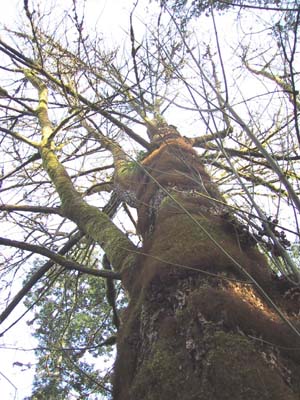
Big leaf maple
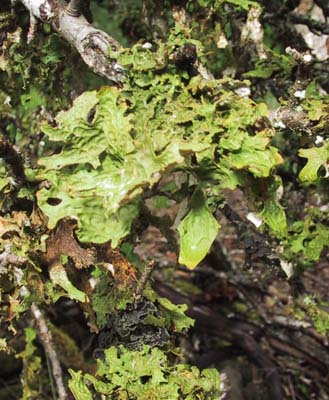
lobaria
It’s early April on this little island and the rainforest is waking up. Some of the largest maples on earth are beginning their annual flowering cycle. Rising up to over a hundred feet, their trunks and branches are festooned with epiphytes and a thick pelt of mosses hiding a thin microcosmos of curious arboreal soil inhabited by unique tiny arthropods existing nowhere else. Like terrestial coral reefs, these enormous trees form fractal frameworks that rake the sky. A furry pelt of botanical symbiots (mosses, lichens and ferns) wrings moisture and minerals from the soft marine air, feeding them through the bark into the throbbing sapstream of the living tree. Some, like the strange floppy lobaria lichen, actually extract gaseous nitrogen from the air via their *own* internal colonies of cyanobacteria, fixing it into their tissues, to fertilize the forest soil when blown down by the howling south-east storms of autumn.
Sadly this exquisite symphony of nutrient cycles and ecological interchange; this apogee of rarified botanical evolution, lies prone on the chopping block of capitalist utilitarianism. This grove, in particular the red cedars, Douglas firs, hemlocks and Sitka spruces that grow here, are worth more dead than alive and can be exported overseas as raw logs if some way can’t be found to buy the land they stand on. Living amongst these towering trees tears me between the euphoria of being immersed in their seething life force and the deep sadness of constantly contemplating their demise. How can these ancient dark and melancholic trees stand up to the banal brightness of our commerce? They have stood like sentinels through the quiet of a hundred and fifty winters yet faithfully unfurl their massive handlike leaves to the promise of each spring. Now, sadly their fate is in *our* hands; furtive, scuttling creatures, (to quote Kurt Vonnegut) our judgement constantly impaired by “big brains and short lives.” We don’t deserve such power. Yet it is our fate to exercise it.
Down in Vancouver, after working on my Means of Production project, my pals at EYA, knowing my penchant for studying ruderal ecologies, snuck me through a hole in a chain link fence into a secret urban Arcadia. A former train yard, the vast expanse of gravel track bed has been colonized by dwarfed birches (uncommon in urban Vancouver) and sweetly fragrant cottonwoods redolent with the intoxicating *balm of gilead* exuded as their buds were caressed by the warm spring sun. We trudged further. . feeling strangely enveloped by the place’s bizarrely Nordic, post-apocalyptic spiritus locii. As in a dream, I suddenly thought of the *zone*, the parallel universe depicted in Tarkovsky’s The Stalker. Averting my gaze from the horizon and its industrial buildings, I imagined being inside some German Romantic painting by (say) Caspar David Friederich or that I was traversing some stony subalpine pasture high in the Hindu Kush or Syria, flush with the new growth of spring. This wasteland was becoming verdant once again, having (for now) escaped the forces of bureaucratic tidiness by hiding in the city’s interstices.
At the edge of this strange paradise lay an abandoned jumble of enormous concrete pipes, some upended, some lying down; their cement skins spalling off, eroded by relentless winters of rain, allowing the rusty iron skeletons to spring out insanely from their long years of confinement. Stuffed with sodden bedding and shored up from the night winds with bits of brush, these were the rough homes of a demi-monde of *tube dwellers* Alas, abandoned syringes lay everywhere.. I wonder if their wishes came true ?
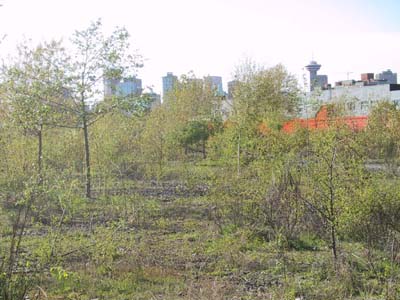
ruderal cottonwoods
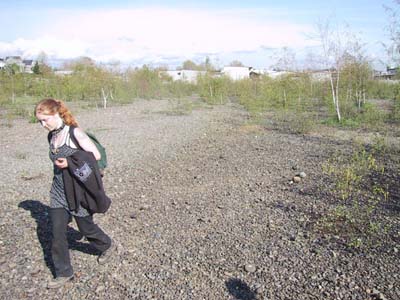
ruderal hiking
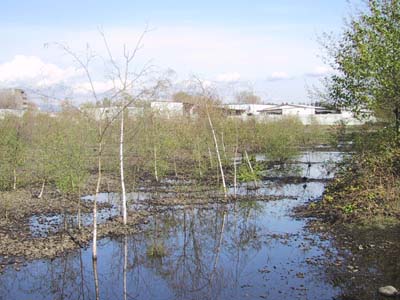
ruderal wetland birch forest
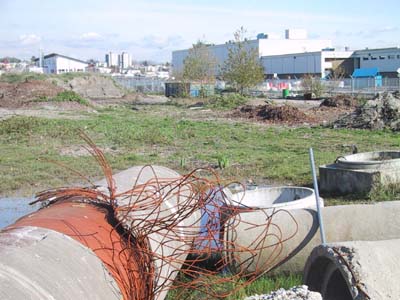
tube landscape
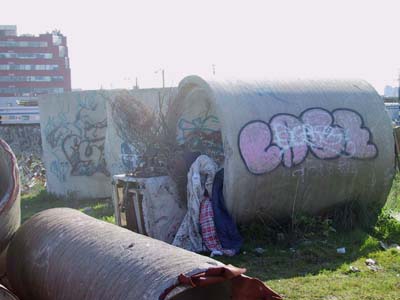
tube dwellings
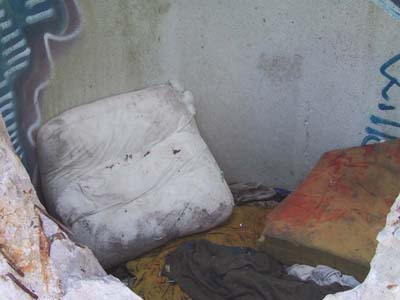
inside tube dwelling



